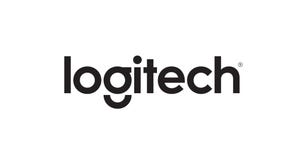The Importance of Integrating Remote and Onsite WorkspacesThe Importance of Integrating Remote and Onsite Workspaces
For hybrid work, effective collaboration and communication requires purpose-built tools for both remote and onsite workers.
March 28, 2023

The pandemic brought about many big changes, but perhaps none was more impactful than the shift to a hybrid work model.
When the pandemic first began, organizations scrambled to enable fully remote work. Looking back, it’s truly incredible how quickly organizations responded. They — rightly — paid a great deal of attention to ensuring that remote workers could access corporate applications securely, but relatively little on the user experience.
Today, hybrid work is the new normal, and the ability to engage both remote and onsite workers productively and professionally is a huge competitive advantage.
A recent Frost & Sullivan report finds that smart endpoints and peripherals determine the quality of user interactions and overall business performance. However, most workers’ laptops and peripherals aren’t equipped to ensure clear communication across collaboration platforms. Indeed, Logitech conducted an extensive study among
IT hardware decision makers and found that fewer than 40% of respondents said their organizations provide external webcams, headsets, or other accessories that optimize audio and video performance — even though many employees have been meeting remotely for more than a year.
Even less attention has been paid to onsite workspaces. In fact, it’s safe to say that many companies have not considered the impact that onsite workspaces have on the quality, accessibility and even the equity of hybrid meetings.
Setting up Remote Workers for Success
Hybrid work is video-first and collaboration-centric, but employees who work remotely are often ill-equipped for high-quality video collaboration. In addition to a computing device, input tool and, for some users, a monitor, remote workers benefit from a high-quality webcam and headset.
For example, purpose-built collaboration tools like multimodal headsets enable workers to easily switch among devices, increasing their productivity and setting the stage for more effective collaboration and communication. Further, these tools should be optimized for business and certified for the meeting platforms that remote workers are likely to encounter as they work with internal and external clients and partners, including Microsoft Teams, Google Meet and Zoom.
Breaking Down Barriers in Meeting Spaces
It’s hard to believe that only a few years ago meetings including both onsite and remote workers were the exception rather than the rule. Today, quite the opposite is true, but many companies do little more than set up a monitor in an onsite meeting space to “include” remote workers. Anyone who has been on either end of such a meeting knows how poor the experience can be. To support meetings that promote true collaboration and communication between remote workers and workers onsite, companies should consider putting into place (among other things):
A tabletop, center-of-the-room camera with intelligent multi-participant framing to provide both room context and individual speaker views
A mechanism for enabling anyone in the room to effortlessly share whiteboards and other collaboration tools so remote participants can see and respond to them quickly and clearly
Intelligent and equitable representation of all meeting participants
The gap between what companies need to collaborate effectively and what they have is a huge opportunity for partners. Indeed, even though it’s been three years since the start of the pandemic, many organizations are still trying to figure out how to make the hybrid model work well, rather than just work. And there’s a growing sense of urgency to figure it out because the companies that do so first will be the ones poised to take advantage of new opportunities.
Logitech provides a number of tools — including headsets, keyboards, and AI-powered cameras and whiteboards — that enable organizations to develop a seamless collaborative environment across remote and onsite meeting spaces. More information and expert insight can be found here.
This guest blog is part of a Channel Futures sponsorship.
Read more about:
MSPsAbout the Author
You May Also Like



